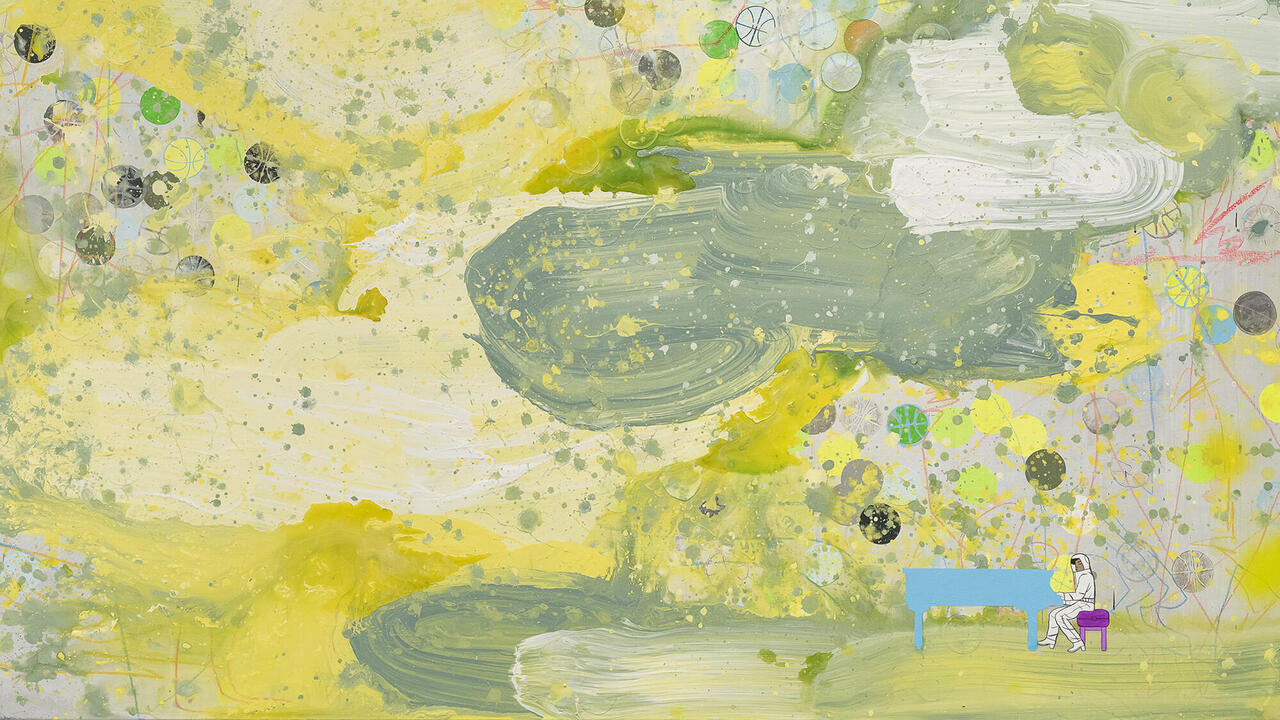Printemps de Septembre

Walking through the narrow streets of Toulouse, I thought the city must have suffered a preternaturally hot summer. A ‘Pharmacie’ sign, one of those green neon crosses ubiquitous in France, was warped and gooey, as if it had started to melt. Turning the corner, I noticed a ‘Tabac’ sign had undergone the same ordeal. At some point, after the third or fourth wobbly sign, I realized they were part of a delirious, city-wide installation by Franck Scurti (Reflections, 2004). One-liners, to be sure, but I never tired of seeing them, and as temporary public art they effectively infiltrated the texture of the city, wittily, drunkenly announcing the presence of this year’s ‘Printemps de Septembre’, subtitled ‘In Extremis’.
Artist and Toulouse native Jean-Marc Bustamante, the artistic director of this year’s ‘Printemps’, argued that contemporary artists use the image rather than nature as their source material. The subtitle of the show ‘In Extremis’ was supposed to reflect work that goes ‘beyond the image’. Although the theme came across as a vague, post-Warholian take on contemporary art (if readily visible in Scurti’s woozy signs), his other goal was more straightforward. Bustamante believes that biennial and art fair curators fail to give artists enough space to exhibit their work; his aim was to reduce the overcrowding. The second idea was perfectly clear and bore tangible fruits. Fewer artists meant a more digestible – and a more satisfying – exhibition.
Perhaps Pascal Convert’s work best illustrated Bustamante’s definition of ‘beyond the image’. Convert chooses notorious media images –such as Mohammed al-Durra, the Palestinian boy huddled beside his father seconds before being shot, or Kosovan women wailing in grief – and transforms them into life-size wax friezes. The image is imprinted rather than raised, as if the figures had been pressed into the cooling wax and removed. The results look like inverted Renaissance reliefs (think Donatello) and, displayed in Les Jacobins, a 12th-century convent church, the sculptures mimicked – and almost achieved – the solemnity of religious art. Bathos, however, haunted the rest of the dark space. Barry X Ball’s laser-carved stone heads – Matthew Barney (2003) looked like an impaled octopus –were dramatically lit with spotlights, creating a repellent sci-fi Gothic mood, and Jan Fabre’s Angel of Death (2002) is a video of a dancer reciting a humourless ‘monologue for a man, woman or hermaphrodite’. Gravity may have been the intended effect, but each piece was insipid and leaden with portentousness.
Elsewhere, at the Château d’Eau (a medieval water tower), La Maison Eclusière and L’Ecole des Beaux-Arts, the installations used the pre-existing spaces more successfully. Uri Tzaig and Avi Shaham made good use of the Château d’Eau, with Observations (2004), a series of photographic portraits that plays with water as an image of subjectivity and consciousness (and, amid the gears and guts of the old building, a heart-rending video of pensioners losing their sense of self). Børre Sæthre’s multi-part installation at L’Ecole des Beaux-Arts featured bum-licking Bambis, a video loop of fan explosion and a fleet of self-guiding vacuum cleaners. Sure it was nonsense, but his over-the top pursuit of absurdity was splendid too. At La Maison Eclusière, Serge Comte set up his elaborate and ingenious Paradise (2004): a Mike Nelson-like journey through a scruffy old building that seemed to reflect the mind of a teenager desperate to hang on to his/her innocence while beset by a new libido and the pressures of being cool. A shattered chandelier, which looked as if it had dropped from the heavens into the house’s derelict courtyard, was its brilliant central image.
Group-show weariness threatened at Les Abattoirs, Toulouse’s large centre for contemporary art and the heart of ‘Printemps …’, yet a few things stood out. Christophe Draeger’s grandiose short film Le Radeau de la Macumba (2004) is a spliff-fuelled look at Modernism, urban blight and horror. In sharp contrast, Marijke van Warmerdam’s short film loop Met Losse Handen (No Hands, 2004) follows a bike trip through the Dutch countryside that features a sudden flight above the fields and trees in a graceful, dream-like motion (from the viewer/cyclist’s perspective). Both pieces are smart looks at the lure of fantasy (one social, the other private), and each fit within Bustamante’s theme. Amid all these supernatural goings-on, however, the understated photographs of Anne Daems were revelatory. A woman in a launderette and another sitting against a window in a grocery store – these images were far from ‘In Extremis’. The hard-won simplicity of her work did not emerge from a post-surreal adaptation of a pre-existing image but rather brought us slightly closer to something primary, essential and new. Michel de Montaigne, the 16th-century genius of diffidence who wrote his Essays (1580–88) near Toulouse, wrote that ‘there is no quality so universal in the appearance of things as their diversity and variety’. A truism, perhaps, but one that Daems’ photographs demonstrate is worth keeping in mind.
















